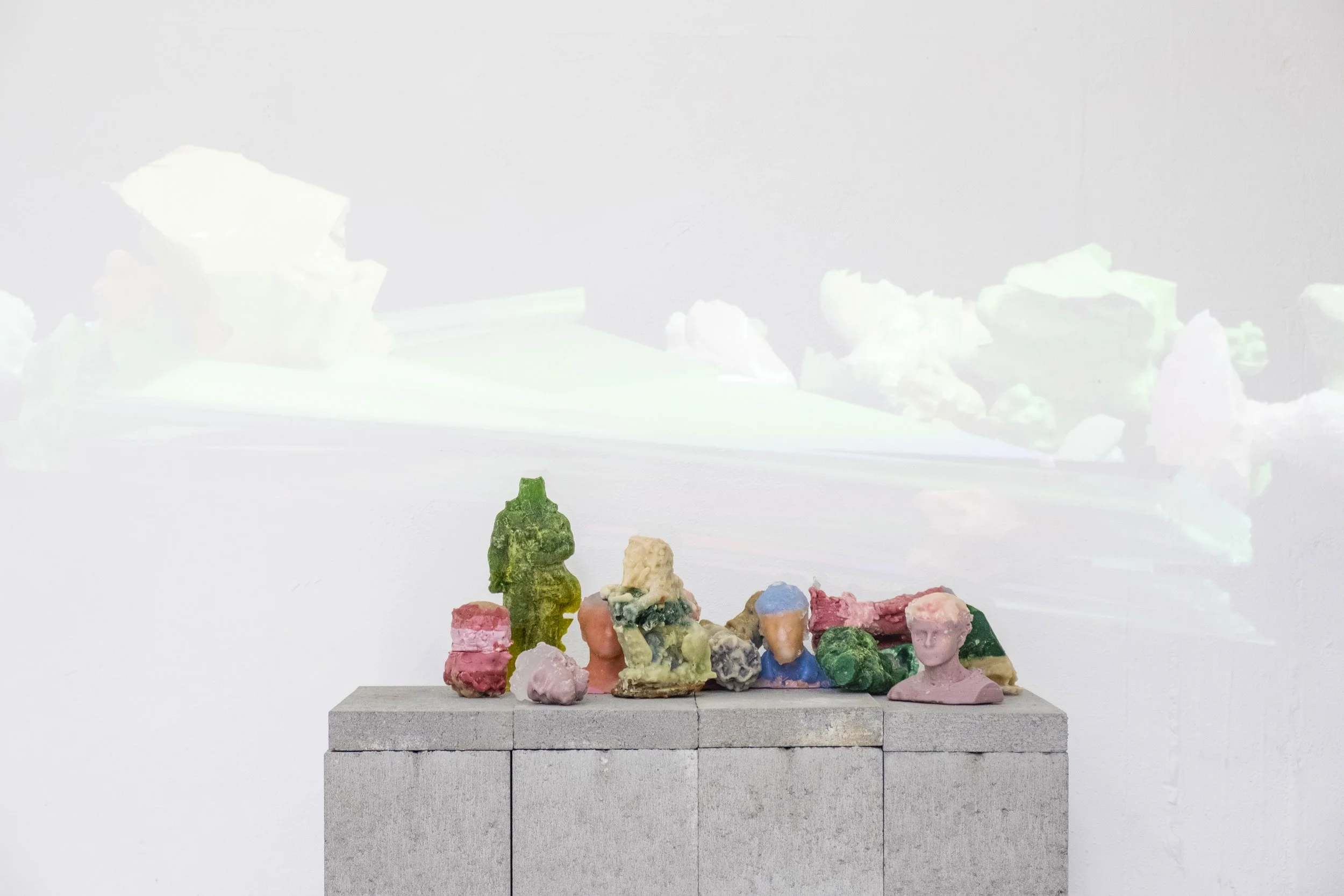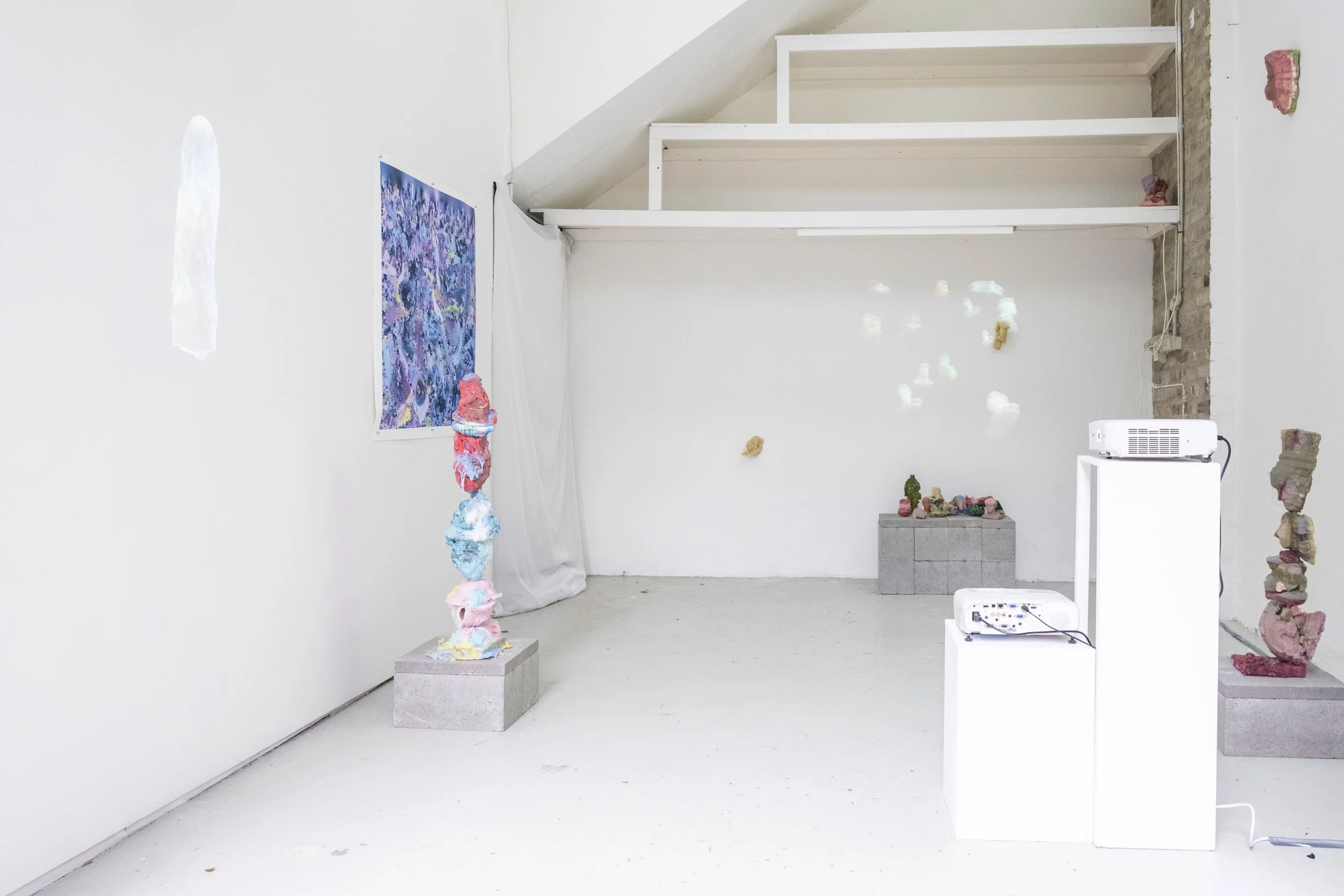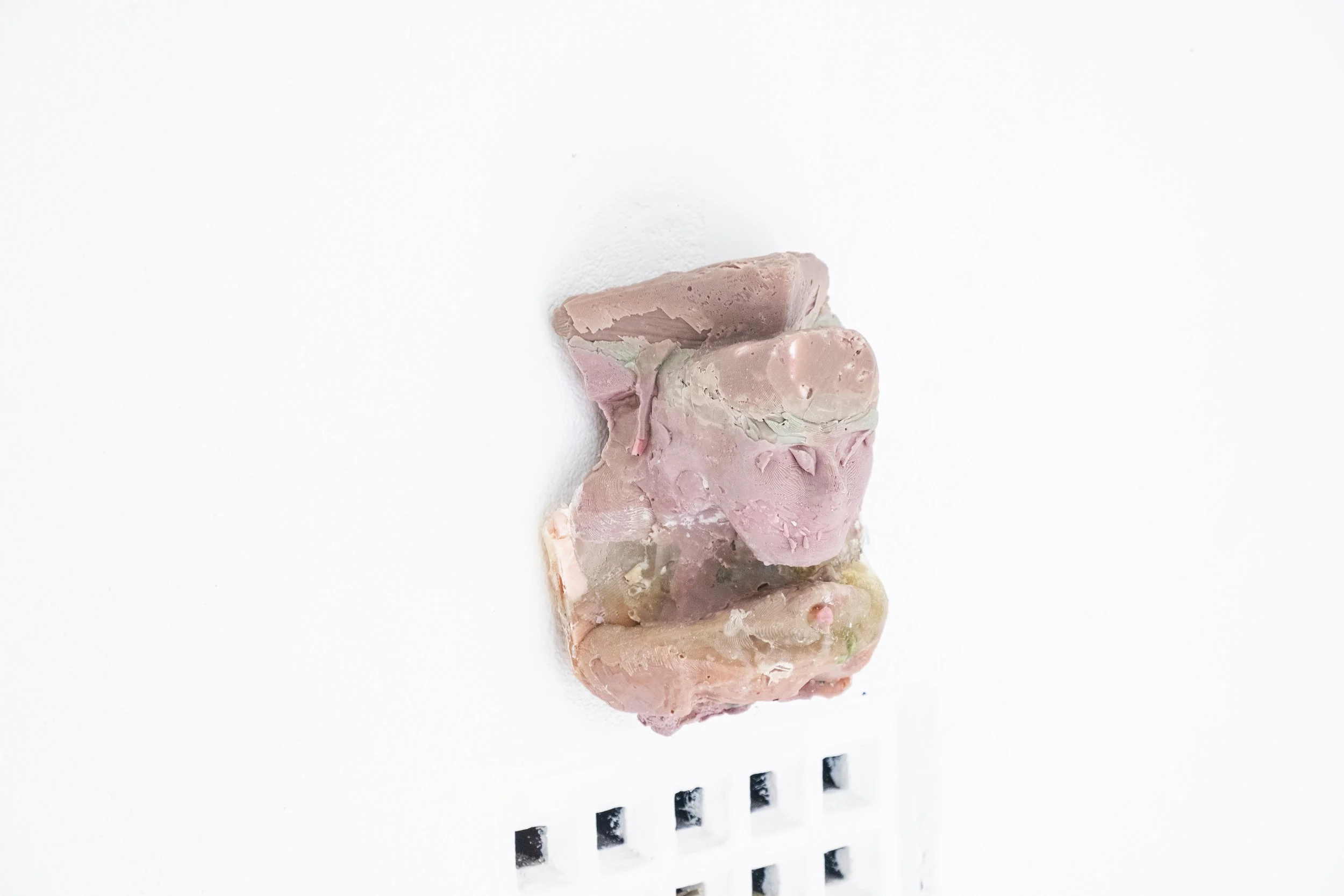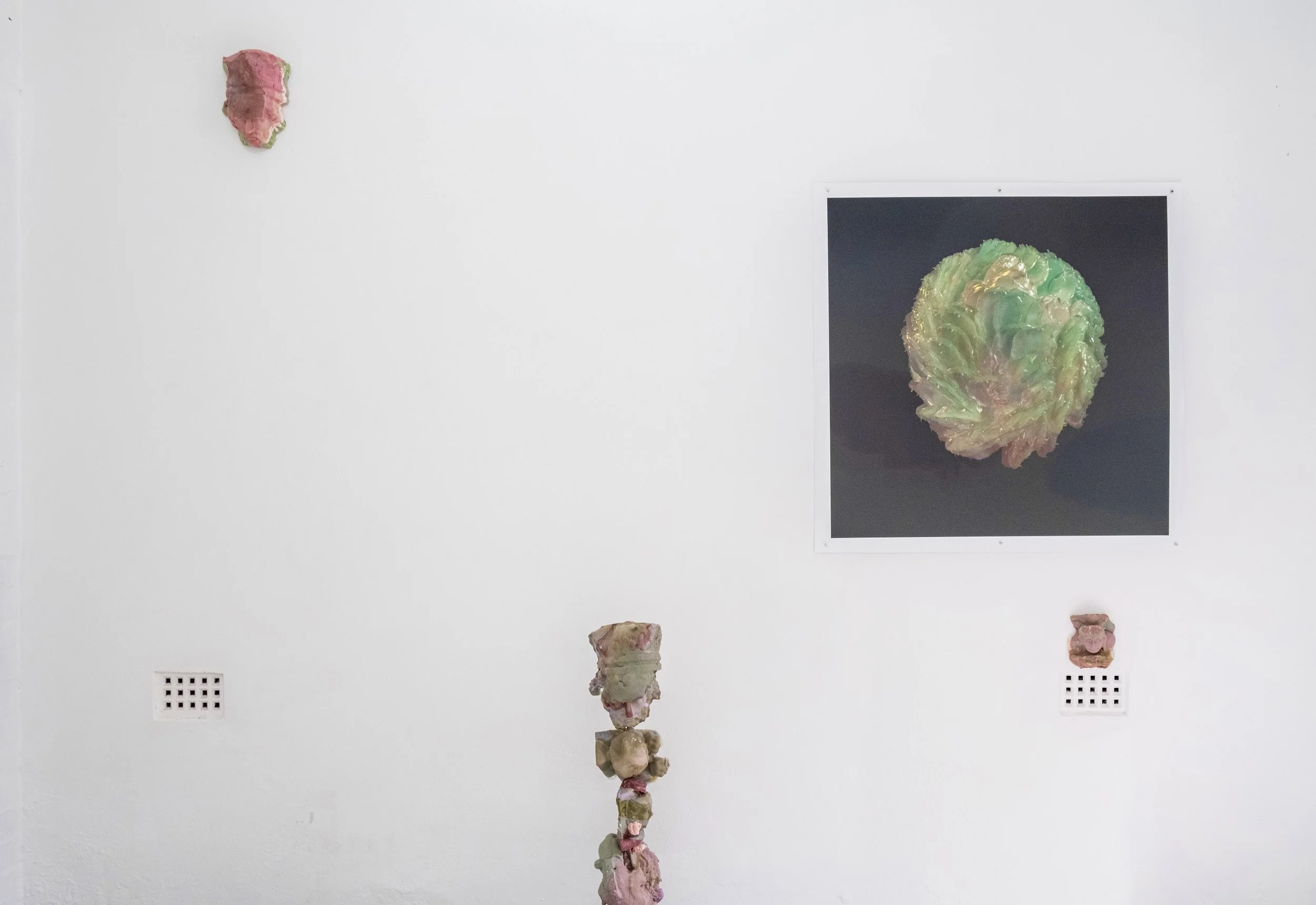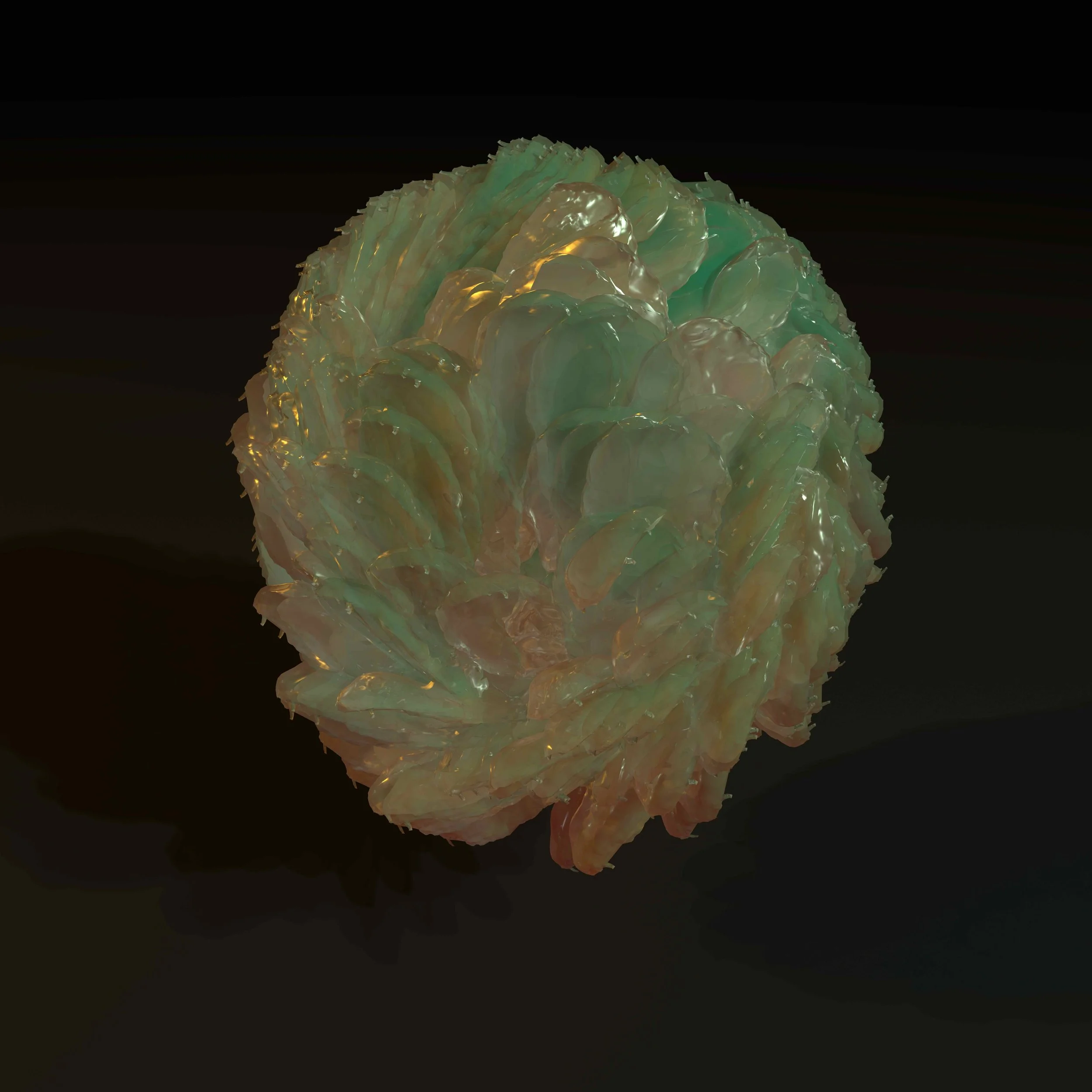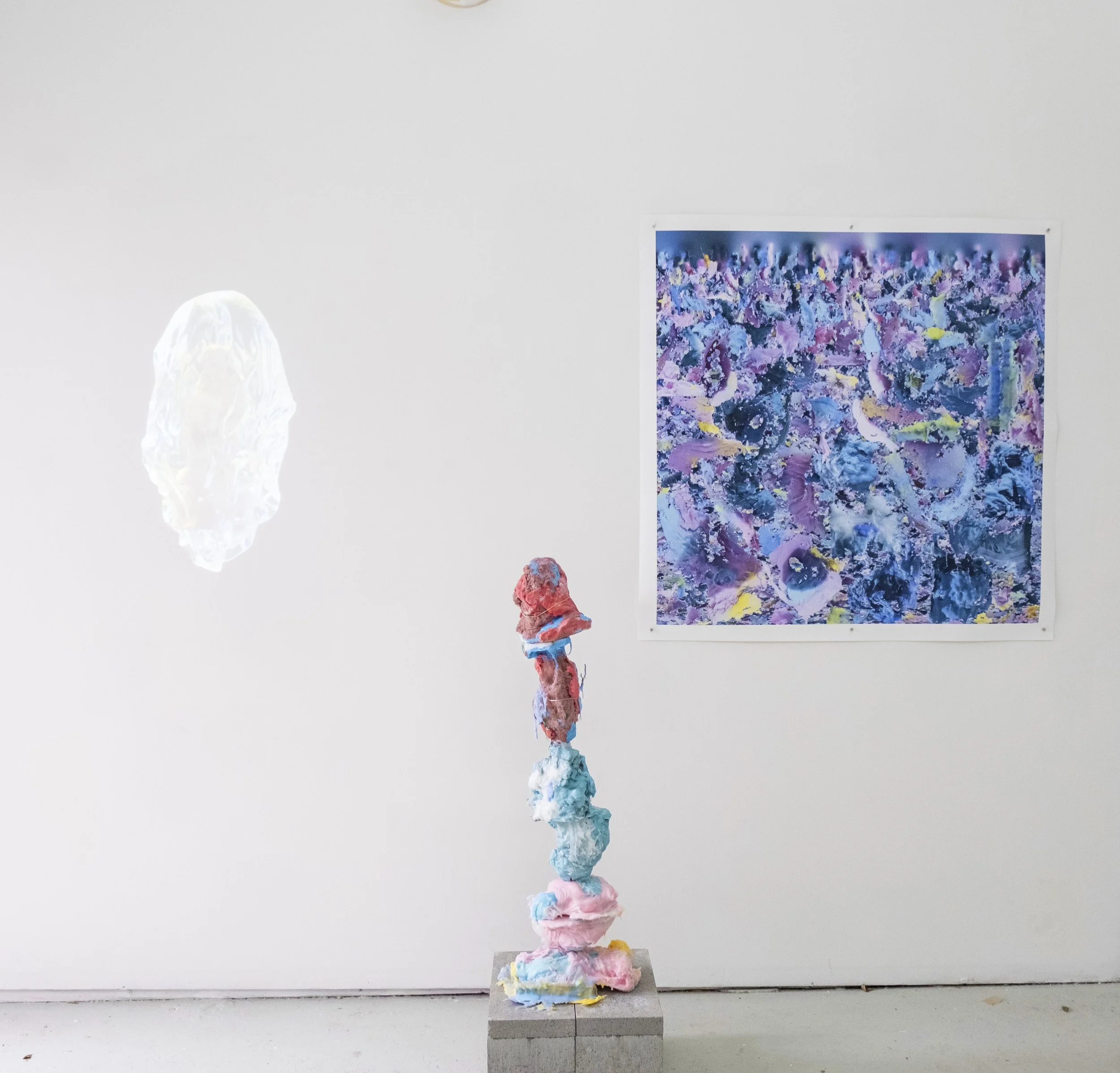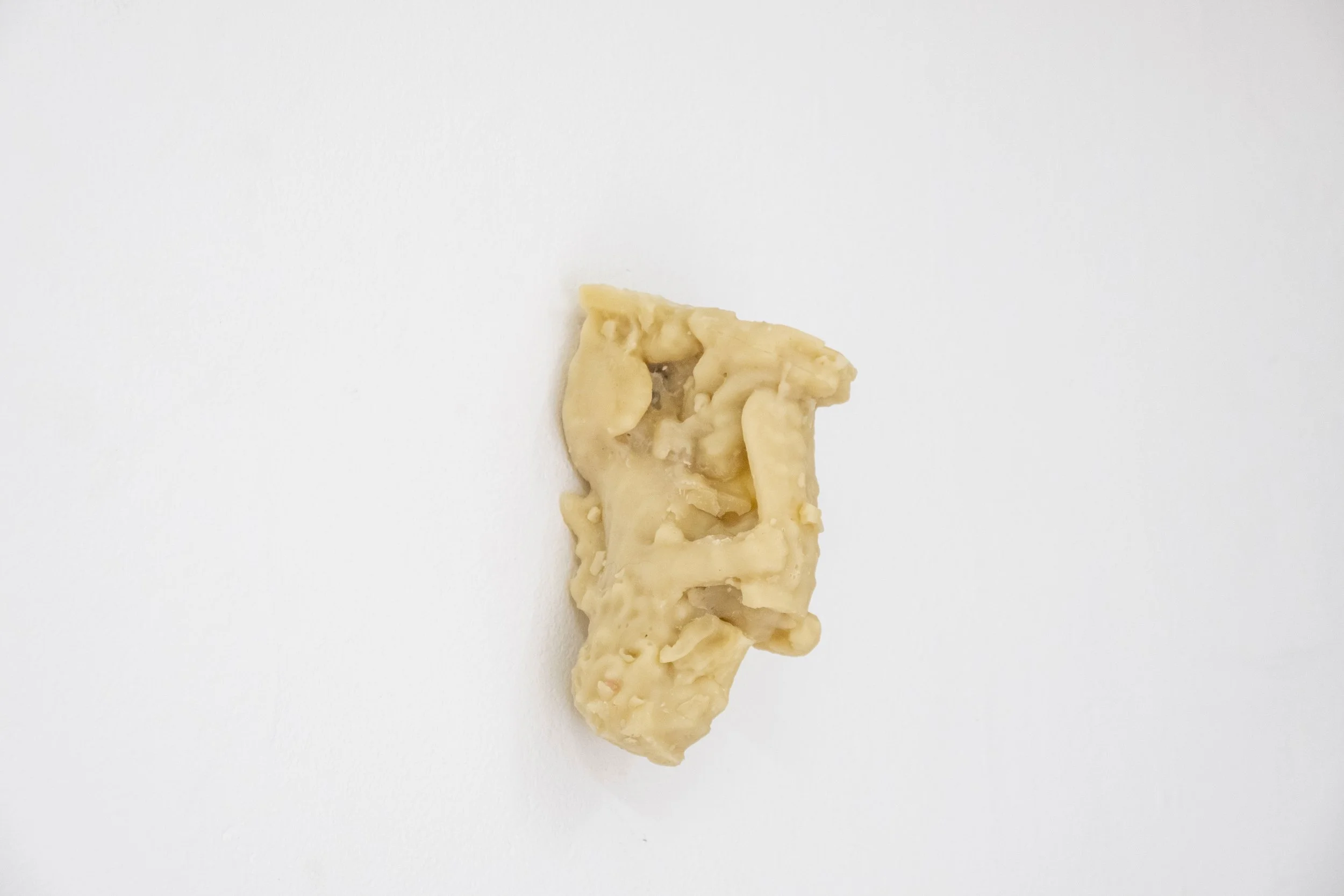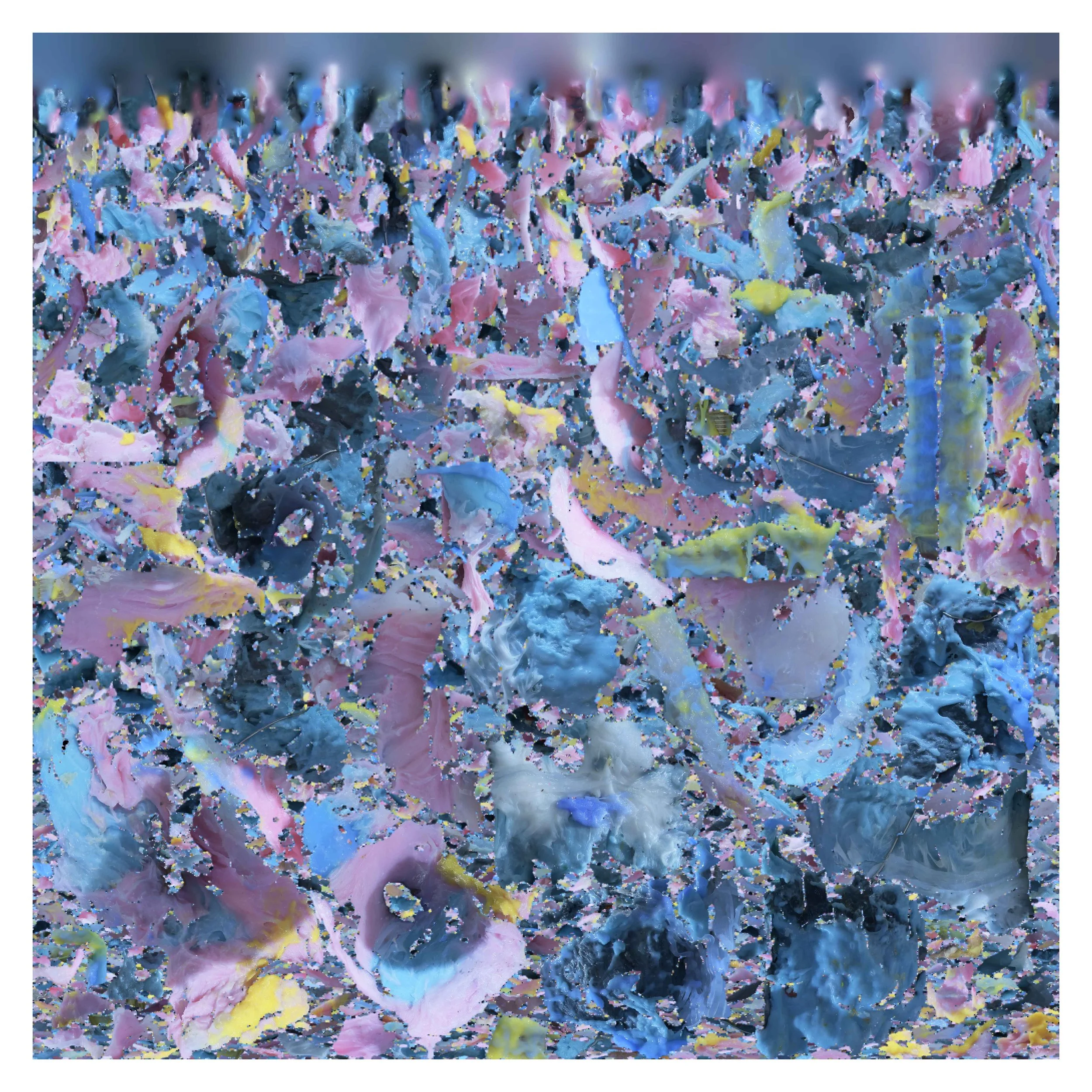Duo Show / Exquisite Corpse
August 16, 2024 - August 30, 2024
Puzzle Art Gallery
Exquisite Corpse is a collaboration of sculptures and animations by Sarah Eddowes and Daniel Press. Like the surrealist game, each artist worked on a composition before passing it to the next collaborator to continue. The duo exchanged sculptures back and forth to build towering structures of absurdity.
Fragments of gargoyles, grotesques, and bronze statuary were 3D scanned from around the Chippendale area, where the artists explored the slippage between visceral physical materials and digital fabrication. Their shared sculptural language enabled an interplay from artist to artist and machine to machine, morphing into sculptural goops of surrealist fun.
Sarah Eddowes and Daniel Press, tower of grots, 2024. Wax, wood, resin, and ballistics gelatin. Photography by Dean Qiulin Li.
“Sarah and Daniel’s works exists in a dialectical relationship between creation and destruction, generation and ruin… They emerge corpse-like from the earth in a joyful revitalisation of all that has perished, curdled, rotted or dissolved”.
— Zali Matthews from In Limbo catalogue essay
Sarah Eddowes and Daniel Press, thinker, 2024. Wax and ballistics gelatin. Photography by Dean Qiulin Li.
Sarah Eddowes and Daniel Press, pile, 2024. Wax, resin, and ballistics gelatin. Photography by Dean Qiulin Li.
Sarah Eddowes and Daniel Press, Exquisite Corpse install shot, 2024. Photography by Dean Qiulin Li.
Sarah Eddowes and Daniel Press, falling, 2024. Animation.
Sarah Eddowes and Daniel Press, child, 2024. Wax and resin. Photography by Dean Qiulin Li.
Sarah Eddowes and Daniel Press, Exquisite Corpse install shot, 2024. Photography by Dean Qiulin Li.
Sarah Eddowes and Daniel Press, cabbage, 2024. Print.
Sarah Eddowes and Daniel Press, tower of grots, 2024. Wax, wood, resin, and ballistics gelatin. Photography by Dean Qiulin Li.
Sarah Eddowes and Daniel Press, Exquisite Corpse install shot, 2024. Photography by Dean Qiulin Li.
Sarah Eddowes and Daniel Press, pile detail, 2024. Wax. Photography by Dean Qiulin Li.
Sarah Eddowes and Daniel Press, grotesque, 2024. Wax. Photography by Dean Qiulin Li.
Sarah Eddowes and Daniel Press, haunt, 2024. Animation.
Sarah Eddowes and Daniel Press, kebab map, 2024. Print.
In Limbo
catalogue essay by Zali Matthews
One winter evening in Paris in 1925, a group of young surrealists devised a new parlour game. Taking turns, each artist sketched part of a body – a head, chest, legs or feet – and, once finished, folded over the piece of paper to conceal their work from the next participant.
From these unique combinations of loose and automated sketches emerged a series of odd and haphazard figures. With faces sporting lopsided or missing features, splayed feet, and limbs replaced with the parts of animals and plants, they exuded a violent eclecticism much like toys which have fallen victim to the impulsive and unfathomable cruelties of young children before being discarded: their heads ripped off and shoved back on, or limbs lost and replaced with those of other toys.
This exercise, named ‘exquisite corpse’ after a sentence conceived from the same process (‘le cadaver—exquis—boira—le vin—nouveau’, or ‘the exquisite corpse will drink the new wine’), offered a playful new avenue for exploring the surrealist concept of pure automatism. Much like children’s dismembered toys, these ‘exquisite corpses’ unveiled their makers’ innermost thoughts, free from the constricts of reason or moral and aesthetic obligations.
Like the surrealists, artists Sarah Eddowes and Daniel Press explore material chance and sensory automatism, wrapped up in all the uncertainty that collaboration brings, in Exquisite Corpse at Puzzle Gallery. On display are several wax and silicone sculptures in hues of mucous green, sickly yellow and pale, muddled pink alongside projections of wobbly virtual forms.
Sarah and Daniel are no strangers to each other’s practices and have exhibited together several times. Yet in a first for both artists, Daniel joins Sarah in her brightly lit studio at the UNSW Art & Design campus in Paddington to pass projects back and forth between each stage of making, ‘folding over the paper’ along the way.
Daniel has cast wax copies of statues found scattered in the streets surrounding Puzzle Gallery and the nearby University of Sydney campus in an expansion of his recent PhD work into destabilising settler-colonial monuments through 3D scanning and printing. With gently staggered and sedimentary layers of coloured wax, his figures suggest the warm and undulating hues of the Sydney sandstone typical of the university’s architecture: before Sarah methodically slices and restacks them into lopsided, curved and refracted forms recalling the spindly curve of a human spine. In other instances, Sarah digitally generates and 3D prints new forms to create silicone moulds, into which Daniel forcefully casts his wax figures. Onto these resulting lopsided and distorted monuments, Sarah attaches strange, waxy masses and appendages. The pair similarly collaborate with 3D modelling software, blending Daniel’s scanned figures with Sarah’s wobbly and fleshy textural renderings to create figures ghostly yet viscerally revived. For both artists, this collaboration stands as a testament to letting go and exposing their practices to each other’s influences and processes of making.
Although bound by shared processes and materials, both artists diverge in their approaches to time and its relationship to growth and decay. In his PhD thesis, Daniel describes time as a destructive agent that thrusts monuments into a state of ‘ruinous limbo’, whereby they are subject to perpetual weathering and degradation, or regeneration through civic maintenance. Over time, the monument strays further and further from its original state; if re-cast, each copy presents new imperfections, and so strays further again. For Sarah, however, time is generative, and it imbues her forms with a slippery, breathy sense of life.
Together, Daniel’s ruinous and ghostly monuments are re-animated and resurrected in a kind of fungal, ruinous form of colonisation, like an insect host unwittingly infected and controlled by a species of parasitic fungus, while Sarah’s waxy, bodily forms are pressed into new likenesses. The process of making monuments is bastardised and inverted: the casting process, integral to the act of copying, remembering and replicating – whether it be a form, idea or national narrative – becomes unreliable. The figure becomes squishy, bodily, and refuses any pretences of solidity and longevity.
Central to this collaboration is a shared preoccupation with the body, explored through acts of ‘mapping’. Through scanning and copying monuments, Daniel maps both the institutional structures which create and support these sculptures, and his own body as he navigates public spaces and their physical and intangible systemic barriers to gain access to them. By contrast, Sarah creates forms in dialogue with her hands and body, generated in response to her own movements. In doing so she maps her own interior, her felt experiences of tangible and visceral presence, peeled open and reconstructed through her noodle-like sculptures which expose the wriggling, living structures beneath.
Sarah and Daniel’s works exist in a dialectical relationship between creation and destruction, generation and ruin. Like the surrealists’ ‘exquisite corpses’, these simple forms bely an exquisite complexity of detail and collaborative process. They emerge corpse-like from the earth in a joyful revitalisation of all that has perished, curdled, rotted or dissolved.
Zali Matthews
© August 2024


